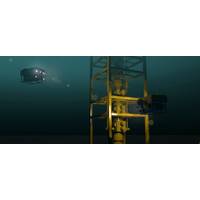
ClassNK Offers Guidelines for ROV/AUVs
ClassNK produced "Guidelines for ROV/AUV” which summarize the performance and safety requirements for remotely operated underwater vehicles (ROVs) and autonomous underwater vehicles (AUVs).To date, ROVs and AUVs have been mainly used for oceanographic surveys and offshore oil and gas field development, but in recent years their utilization as a means for maintaining offshore wind power generation facilities and pipelines has been steadily increasing. Although the utilization of ROVs and AUVs is increasing worldwide, no international standardization of such technologies has yet
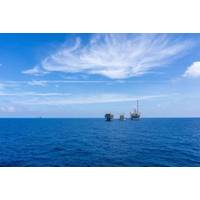
IEV Wins Subsea Pipeline Inspection Gig in Malaysia
the contract through its 49%-owned associate, IEV Malaysia.Under the contract awarded by an unnamed oil and gas producer IEV Malaysia will be providing an ultrasonic scanner technology deployed by a remotely operated vehicle (“ROV”) to inspect a subsea pipeline located at an offshore oil and gas field in Malaysia. he contract is estimated to have a contract value in excess of US$1.5 million (approximately MYR6.47 million).IEV said Monday that equipment and personnel preparation and mobilization had already started. Offshore work is planned to be undertaken within the next few months

First Subsea Installations Begin at Duva
and construction campaign for the Duva field development is now underway with the installation of the Integrated Template Structure (ITS), Neptune Energy said on social media on Tuesday.The ITS is the first large scale piece of fabrication work to be completed for the Neptune Energy-operated Duva oil and gas field in the northern part of the North Sea, Norway. Weather conditions permitting, it is expected to be installed over the course of a five-day campaign, the London-based independent oil company said.According to Neptune Energy Norge’s Managing Director Odin Estensen, "By installing the

Leak Detection Sonar Deployed in the US Gulf
, has been deployed on the seafloor at more than 2,000 meters water depth. The ROV-deployable Sentry IMS, which features a titanium housing and can be installed short-term or permanently, is able to detect, classify and localize subsea releases of hydrocarbons from either the seafloor or oil and gas field production infrastructure, its developer said.In this latest deployment, Sentry is being deployed under a six-month trial that will demonstrate its ability to provide real-time subsea asset monitoring. The Sentry sonar head, which is mounted on a seafloor lander, is connected into an existing
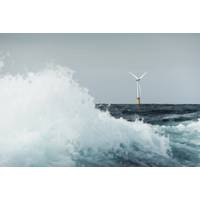
Kvaerner to Study Floating Wind Structures
of the five Snorre A and B, and Gullfaks A, B and C platforms. In periods of higher wind speed this percentage will be significantly higher.Kvaerner, which provides the full scope of engineering, procurement, construction and installation (EPCI) services for both fixed and floating platforms for oil and gas field developments, said it has identified offshore wind as one of the company’s main growth areas in the coming decades. Today, Kvaerner said it offers fixed and floating substructures in steel and concrete as well as converter platforms for offshore wind farms.“During the FEED period
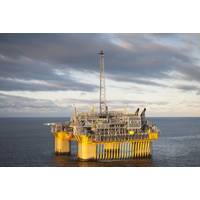
Equinor to Build CO2 Storage Under the Seabed
around the time of the breakthrough Paris climate change agreement in 2015.But environmentalists say is a costly technology that will perpetuate the status quo when rapid and deep cuts to energy use are needed to limit global warming.The planned storage will be located near Norway's largest oil and gas field, Troll, and aims to be able to receive CO2 from onshore facilities, such as power or cement plants, to reduce emissions to the atmosphere.Equinor and partners Shell and Total are working on front-end engineering and design (FEED)-studies, which should provide more accurate cost estimates.The
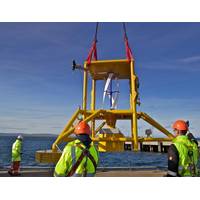
Tidal Power for Seabed Oil and Gas Installations
operations as green as possible.Successful testA prototype Power Hub, using one turbine, completed a successful eight-month sea trial in December 2017 at the European Marine Energy Center (EMEC) in the Orkney Islands, northern Scotland. EC-OG is now refining the system to match the requirements of oil and gas field developers. These include having two or more turbines and differing battery sizes depending on site requirements.The device being lowered to the deck of the Leask Marine C-Odyssey workboat, in preparation for installation at the European Marine Energy Centre (EMEC). (Photo: Nortek)EC-OG is

Hunting Hydrocarbons
greater detail about the hydrocarbons detected. The Franatech laser methane sensor “high-grades” the information gathered, says Lind. An oxygen sensor was also added.During the 14-day Yampi project, again at 200m water depth, the glider was guided over a well-known seep, near the Cornea oil and gas field. A fluorometer primarily detecting FDOM (fluorescent dissolved organic matter) values was used to detect and help analyse what type of hydrocarbons were present alongside a laser methane sensor.Results from the survey showed a background dissolved methane concentration of 3 to 4 volumes per
Subsea 7 Bags Offshore Norway Deal
Subsea 7 S.A. announced the award of a contract by Wintershall for the Nova (formerly known as Skarfjell) oil and gas field development. Nova is located in the north-eastern part of the North Sea, 16 kmfrom the Gjøa field, in a water depth of approximately 360m. The Nova field development is a subsea tie-back to the existing Gjøa semi-submersible production facility. The contract award comprises the Engineering Procurement Construction Installation (EPCI) delivery of the pipeline and riser systems, and the transport and installation of subsea production systems and umbilical system.



 February 2024
February 2024





